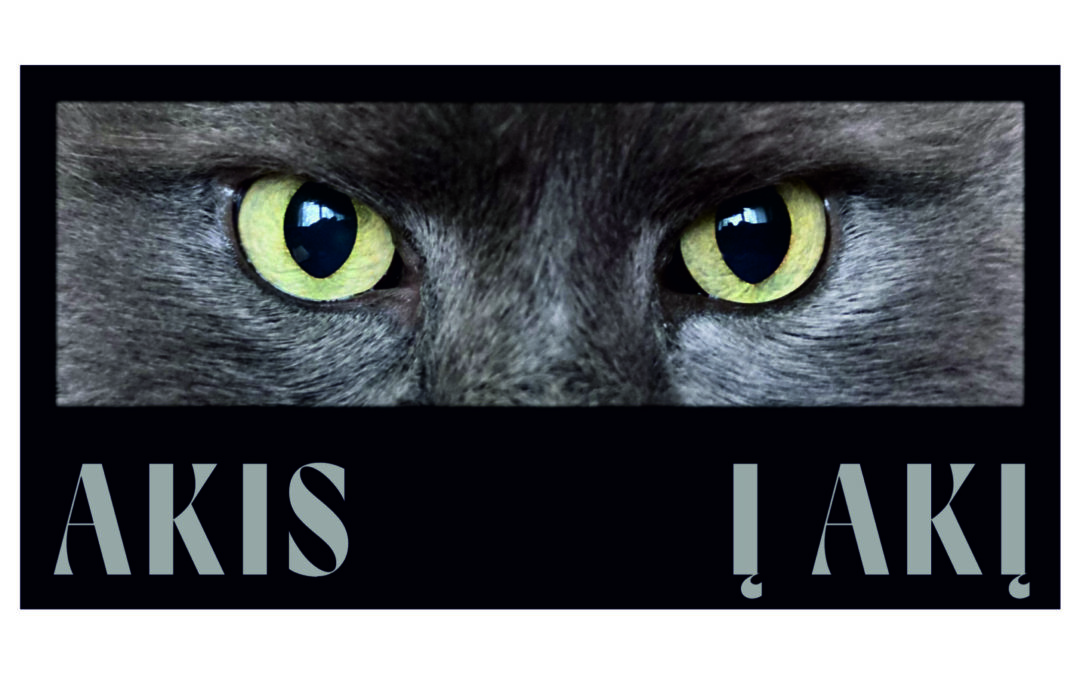2025 m. vasario 21 d., penktadienį, 17.00 val. Šiaulių dailės galerijoje atidaroma šiuolaikinės tapybos paroda „Akis į akį“.
Paroda veiks iki kovo 15 d.
Parodos autoriai: Raimondas Gailiūnas, Konstantinas Gaitanži, Jonas Gasiūnas, Brigita Gelžinytė, Eglė Karpavičiūtė, Jolanta Kyzikaitė, Ričardas Nemeikšis, Eglė Ulčickaitė, Pijus Vaiciukevičius, Gabija Pritkovaitė-Vaiciukevičienė, Tomas Valeika.
Iš kasdienių nuogirdų:
Katinas tyliai kniaukia į palovio tamsą.
– Ko, katinėli, kniauki? Juk ten nieko nėra.
Įsivaizduokime kryžkelę tarp dviejų kaimų. Viename jų gyvena žmonės, kurie visuomet sako tiesą, o kitame – visad meluojantys. Kryžkelėje sutinkame keleivį ir, norėdami sužinoti, iš kur jis ateina, jam galime užduoti tik vieną klausimą. Jei tai bus melagis, paklausę tiesiai, nieko nesužinosime. Anot logikos profesorių, egzistuoja tik viena galimybė priversti melagį pasakyti tiesą: „Jei tu būtum iš kito kaimo, o aš paklausčiau, ar tu iš melagių kaimo, ar atsakytum „ne“?“ Nors pagal logikos dėsnius jokio kito klausimo būti negali, vis dėlto vienas žmogus tvirtino žinąs ir kitą klausimą, kuris priverstų melagį išsiduoti – tiesiog reikėtų šio keleivio paklausti, ar jis yra varlė.
Būtent to kito galimo klausimo paieška – tokio, kuris remtųsi ne visuotiniu, nors ir teisingu, žinojimu, o konkrečia patirtimi – galėtų būti laikoma šios parodos leitmotyvu. Kurdamas menininkas visuomet siekia permąstyti priimtas tiesas. Kaip, pasitelkiant apgaulingą tapybos mediją, priversti tai, ką regi, išduoti savo kilmę? Koks yra vaizdo įtikinamumo kriterijus pačiam tapančiajam? Ar jis tebegalioja žiūrinčiajam? Gali būti, kad paradoksas, prie kurio šiandien mus sugrąžina vizualinės kultūros dominavimas yra paties regėjimo užmarštis. Ekrano ir perteklinės informacijos įtarpintam žvilgsniui nuolat užbėgama už akių įperšant reikšmes, kurių jis turi ieškoti, ženklus, kuriuos jis turi atpažinti. Objektas ar vaizdas savaime nieko nerodo ir nieko nereiškia, bet sykiu gali reikšti bet ką, vos tik atsiranda tam tikras jį įrėminantis diskursas. Tad kokią prasmę tokiame kontekste dar gali turėti patikinimas, kad kažką „regėjau savo akimis“?
Nebylus regėjimo pojūtis yra tai, prie ko siekia sugrįžti parodoje susitinkantys skirtingų kartų šiuolaikinės lietuvių tapybos atstovai. Jie siekia regėjimo patirties prisiminimo, kuris leistų patirti regėjimą anapus jo paties tiesos ir netiesos kaip betarpišką susidūrimą su tuo, kas visuomet esti arčiausiai ir todėl sunkiausiai pastebima: su šviesa, spalva, forma, o galiausiai – su apnuogintu paviršiumi. Paviršiumi, su kuriuo susidūręs akis į akį esi ir klausiantysis, ir tas, kurio klausia.
Juk net jei palovio tamsoje nieko nesimato, tai dar nereiškia, kad ten nieko nėra.
– autoriai
_ _ _
Parodos atidarymo renginys viešas, gali būti filmuojama ir fotografuojama. Dalyvaudami renginyje sutinkate būti matomi renginio nuotraukose, vaizdo įrašuose ir esate informuoti, kad šios nuotraukos, vaizdo įrašai gali būti skelbiami viešai.
On Friday, February 21, at 5:00 p.m., the contemporary paintings exhibition “Eye to Eye” opens at the Šiauliai Art Gallery.
The exhibition will be open until March 15.
The authors of the exhibition: Raimondas Gailiūnas, Konstantinas Gaitanži, Jonas Gasiūnas, Brigita Gelžinytė, Eglė Karpavičiūtė, Jolanta Kyzikaitė, Ričardas Nemeikšis, Eglė Ulčickaitė, Pijus Vaiciukevičius, Gabija Pritkovaitė-Vaiciukevičienė, Tomas Valeika.
From everyday hearsay:
A cat meows quietly into the darkness of the bed.
– What, cat, are you meowing? There is nothing there.
Let’s imagine a crossroads between two villages. In one of them live people who always tell the truth, and in the other – people who always lie. We meet a traveler at a crossroads and, in order to find out where he comes from, we can ask him only one question. If he is a liar, if we ask him directly, we will not learn anything. According to professors of logic, there is only one way to make a liar tell the truth: “If you were from another village, and I asked you whether you are from the village of liars, would you answer ‘no’?” Although according to the laws of logic there cannot be any other question, one person nevertheless claimed to know another question that would make a liar betray himself – one would simply have to ask this traveler whether he is a frog.
It is the search for that other possible question – one that would be based not on universal, albeit correct, knowledge, but on specific experience – that could be considered the leitmotif of this exhibition. In creating, an artist always seeks to rethink accepted truths. How, using the deceptive medium of painting, can you make what you see betray its origin? What is the criterion of the image’s persuasiveness for the painter himself? Does it still hold true for the viewer? It is possible that the paradox to which the dominance of visual culture today brings us back is the oblivion of vision itself. The gaze, interspersed with screens and excessive information, is constantly being preempted by the meanings it must seek, the signs it must recognize. An object or image in itself shows nothing and means nothing, but at the same time it can mean anything, as soon as a certain discourse framing it appears. So what meaning can the assurance that I “saw something with my own eyes” still have in such a context?
The silent sensation of vision is what the representatives of contemporary Lithuanian painting from different generations who meet at the exhibition seek to return to. They seek to remember the experience of vision, which would allow us to experience vision beyond its own truth and untruth as an immediate encounter with what is always closest and therefore most difficult to notice: with light, color, form, and finally – with the naked surface. A surface that, when faced face to face, is both the questioner and the one being asked.
After all, even if you can’t see anything in the darkness of the bed, that doesn’t mean that nothing is there.
– authors
_ _ _
The opening event of the exhibition is open to the public, filming and photography can be done. By participating in the event, you agree to be seen in photos and videos of the event and are informed that these photos and videos may be published publicly.



